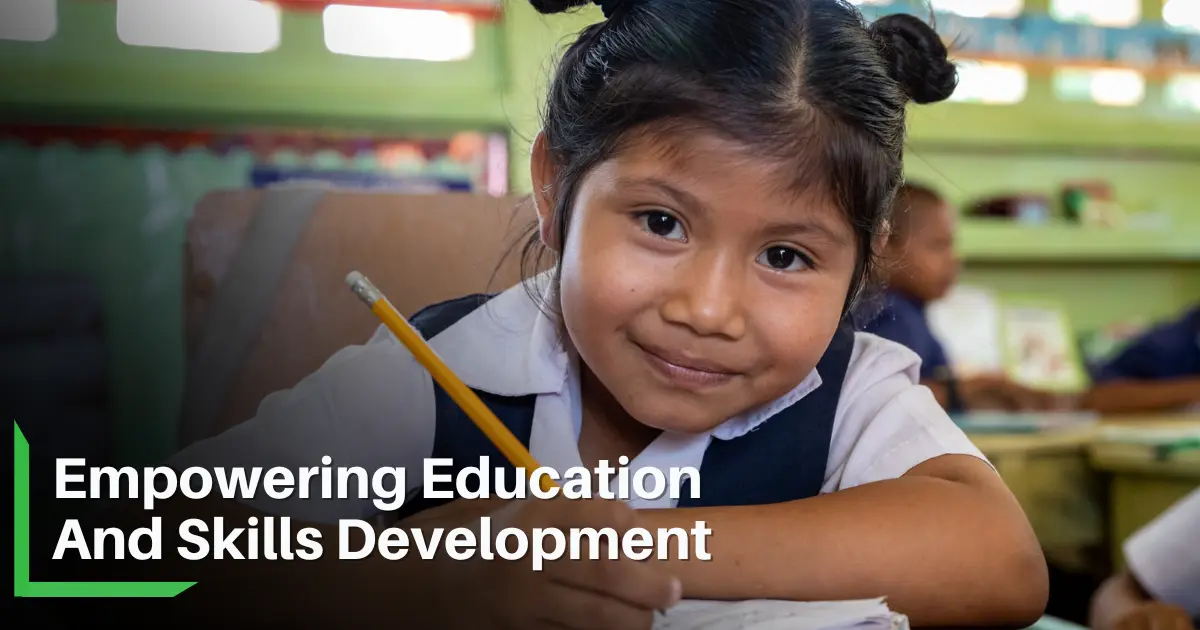The importance of Science, Technology, Engineering, and Mathematics (STEM) education cannot be overstated in an increasingly interconnected and technology-driven world. As Guyana strides towards sustainable development and economic diversification, fostering a robust STEM education framework is imperative. This article explores various initiatives to enhance STEM education in Guyana, underscoring the significance of technological literacy and skills development for the nation's future.

The Imperative for STEM Education
Guyana’s economy has traditionally relied on agriculture and extractive industries. However, the recent discovery of significant oil reserves has heralded a transformative phase. To maximize the benefits of this newfound wealth, it is crucial to cultivate a workforce equipped with modern technological skills. STEM education is the bedrock for innovation, economic resilience, and competitive advantage in the global market. By investing in STEM, Guyana can not only address current economic needs but also anticipate future technological trends.
Government Initiatives
The Government of Guyana has recognized the need to bolster STEM education and has embarked on several initiatives to achieve this goal. The Ministry of Education has introduced a comprehensive STEM curriculum in schools, emphasizing hands-on learning and problem-solving skills. This curriculum aims to foster critical thinking and creativity, essential attributes for the modern workforce.
Moreover, the government has partnered with international organizations such as the United Nations Children's Fund (UNICEF) and the World Bank to enhance STEM education infrastructure. These collaborations have resulted in the establishment of state-of-the-art science laboratories and the provision of modern educational tools, thereby creating an environment conducive to learning and experimentation.
Non-Governmental Organizations and Private Sector Contributions
Non-governmental organizations (NGOs) and private sector entities have also played a pivotal role in advancing STEM education in Guyana. Organizations like STEM Guyana have been at the forefront, promoting STEM literacy through community outreach programs and workshops. STEM Guyana’s Robotics Clubs, for instance, provide students with the opportunity to engage in hands-on robotics projects, fostering an early interest in technology and engineering.
The private sector, recognizing the importance of a technologically proficient workforce, has also made significant contributions. Companies such as ExxonMobil have funded STEM education programs and scholarships, enabling students to pursue higher education in STEM fields. These initiatives not only support individual career development but also contribute to the broader goal of national capacity building.
Technological Literacy and Skills Development
Technological literacy is a cornerstone of modern education, equipping individuals with the ability to navigate and utilize digital tools effectively. In Guyana, efforts to enhance technological literacy have been multifaceted. The introduction of Information and Communication Technology (ICT) in the classroom has been a major step forward. Through initiatives like the One Laptop per Teacher (OLPT) program, educators are better equipped to integrate technology into their teaching methods, thereby enhancing the learning experience.
Additionally, skills development programs have been implemented to bridge the gap between education and employment. Technical and Vocational Education and Training (TVET) programs, for example, provide students with practical skills that are directly applicable to the job market. These programs are particularly important in ensuring that the workforce is prepared for the technological demands of various industries.
The Role of Higher Education Institutions
Higher education institutions in Guyana are pivotal in fostering advanced STEM education and research. The University of Guyana has expanded its STEM offerings, introducing new programs in areas such as computer science, environmental engineering, and biotechnology. These programs are designed to meet the evolving needs of the economy and provide students with cutting-edge knowledge and skills.
Furthermore, partnerships with international universities and research institutions have facilitated knowledge exchange and collaboration, enriching the educational landscape in Guyana. Such collaborations enable local students and researchers to access global expertise and resources, thereby enhancing the quality of STEM education.
Conclusion
As Guyana embarks on a new era of economic and technological growth, the importance of STEM education cannot be overstated. Government initiatives, coupled with contributions from NGOs and the private sector, are paving the way for a robust STEM education framework. By prioritizing technological literacy and skills development, Guyana is not only preparing its workforce for the challenges of the future but also positioning itself as a competitive player in the global arena. The continued investment in STEM education is essential for sustainable development and the realization of Guyana’s full potential.